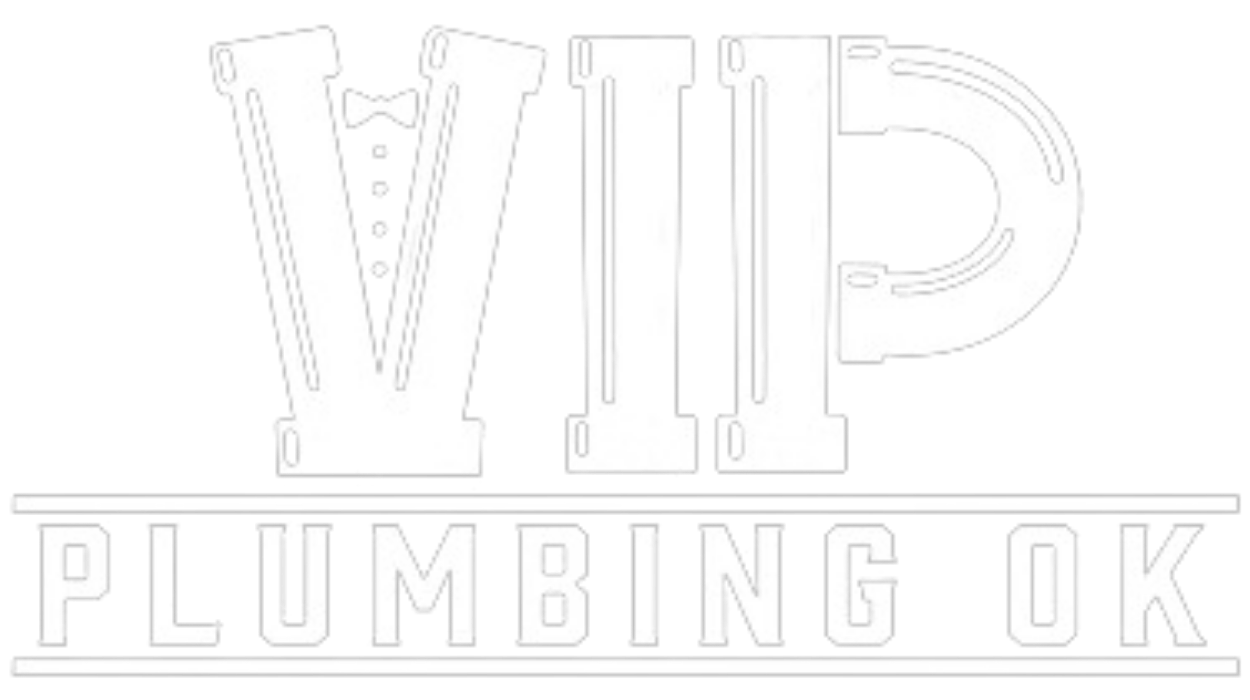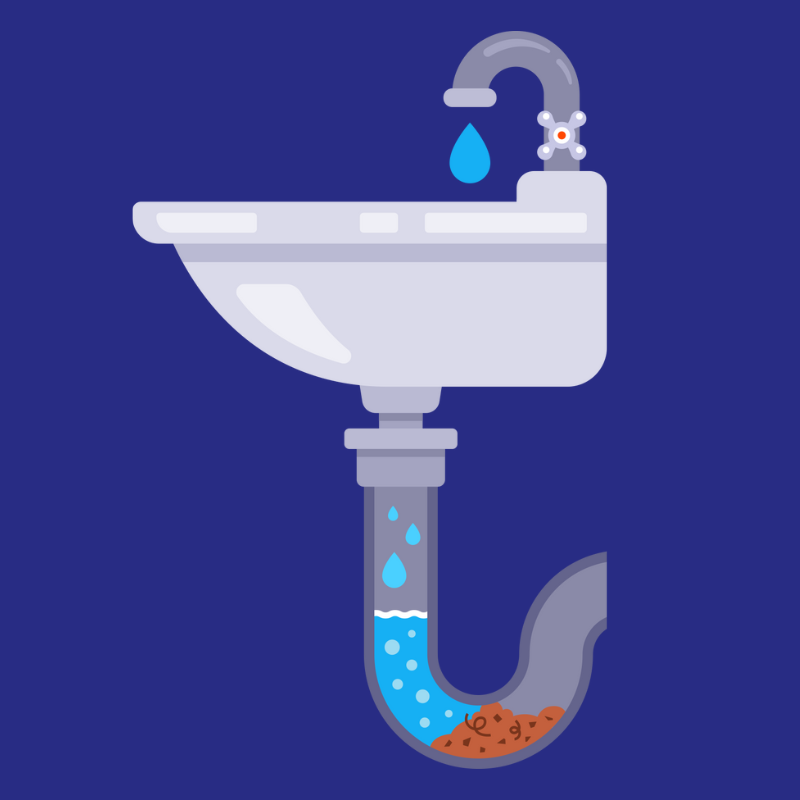We all have experienced a drain clog in a single fixture, which can easily be removed by a few firm pumps of a plunger. But what about drains that seem to clog repeatedly? This can sap our patience, but it can also drain our wallets, as repeated service calls are needed to relieve these clogs.
In this article, we will look at how wastewater is removed from a home through the drainage system comprised of a series of drainpipes connected to either a public sewer system or a private septic tank
Next, we will discuss the common reasons plumbing pipes repeatedly clog and learn the early signs that signal a clog is forming. We will also discuss ways a professional plumber can assist homeowners with frequent clogging issues and suggest ways they can actively participate in preventing this plumbing issue from occurring in their own homes.
How A Drainage System Works
A home drainage system is installed to remove wastewater from plumbing fixtures and water-using appliances and deliver it through the outdoor sewer line into the municipal sewer system. In more rural areas, homes are equipped with onsite wastewater treatment centers known as septic systems. Wastewater is collected in a storage tank, where solid particles sink to the floor while the liquid waste is pumped into a nearby drain field to be absorbed by the surrounding soil.
Every fixture has a drain, and all drains eventually connect to the sewer line. The removal of wastewater relies on gravitational pull and is assisted by incoming fresh air provided by a ventilation system. When the system works correctly, wastewater easily flows through drainpipes, but when certain conditions exist, the pipes can develop clogs, leading to irritations or full-blown plumbing emergencies.
Common Causes Of Clogged Pipes
Clogs can form for many reasons. Some are caused by misinformed family members, while others are related to conditions beyond their control. The most important fact to be aware of is that they will occur, and when they do, they require immediate attention before they grow into more significant problems.
Old Age
Aging plumbing plays a factor in clogged pipes since it frequently sags, cracks, and becomes misaligned from years of normal wear. This allows dirt and debris to enter what was intended as a watertight passageway. As this debris accumulates, it blocks the flow of wastewater and creates clogs that prevent the drainpipe from emptying. These blockages contribute to excess pressure being placed on pipe connections, creating even larger openings for dirt to enter, compounding the problem.
Poor Flushing Habits
Clogged pipes often originate from materials flushed down toilets that were not intended to be disposed of in this manner. Here, we will discuss the most popular items that are disposed of in a toilet and why they are a problem.
Feminine Hygiene Products
Like other products labeled “flushable,” tampons and pad wrappers are incorrectly marketed as permissible for disposal in the toilet. Small and seemingly inconsequential, these materials frequently cause clogs in toilet drains and are better disposed of in the trash.
Diapers
Diapers are designed to absorb moisture, so when they are incorrectly disposed of in the toilet, they can cause serious problems. That is because they swell when exposed to water and can severely block a toilet drain or, worse, the sewer line. In fact, any item that is intended to absorb excess liquids, such as kitty litter, should never be put down a drain.
Flushables
While some products are accidentally flushed, there are some that advertisers insist are permitted in the toilet bowl, such as wet wipes. A selling feature of this product is that it is safe to dispose of in homes connected to public sewer systems and septic tanks. This could not be further from the truth. These products combine further down the drainage system with grease and fats to form cement-like blockages that are difficult to remove. Never believe these false claims but instead, stick to the truth that nothing should be flushed other than human waste and toilet paper.
Sink, Tub, And Shower Issues
Shower and tub drains are susceptible to hair clogs unless hair catchers are placed over drain openings. Sinks, too, are often clogged with shaving remnants and hairbrushes that are frequently washed under the sink faucet. Problems multiply when hair is combined with oily bath bombs, bubble bath crystals, or cosmetics, creating blockages in the bathroom plumbing.
Kitchen Disposal
Drains take an additional beating in the kitchen, where well-meaning helpers often disregard common sense and dispose of items better suited to the trash receptacle.
Fats, Oils, And Grease
Fats, oils, and grease (FOG) are the biggest enemies of drains. Proper disposal of these products is essential to a functioning business in commercial settings. However, in residential settings, they are often ignored, creating serious issues inside drain pipes.
As warm FOG cools, it congeals and lines the interiors of drain pipes, turning them into sticky magnets that catch and hold small food particles meant to pass by. This causes the formation of clogs, and unless habits are altered, this problem will continue even after the initial clog has been removed.
Food Products
Every homeowner should learn and share which foods should be kept out of the drain. Even if a garbage disposal accompanies the sink drain, certain food items are known to clog drains. A short list includes starchy foods that expand when wet and fibrous foods, including celery and corn silk, egg shells, and coffee grounds. For a comprehensive list, an online search is in order.
Scale
As water passes through drain pipes, metallic elements, along with dissolved calcium and magnesium, accumulate inside pipes, increasingly narrowing the internal diameter until wastewater has difficulty passing by. These deposits eventually cause passing waste material to combine and form a clog, a condition found more frequently in older plumbing pipes.
Tree Roots
Although not found in indoor drain pipes, tree roots commonly invade outdoor sewer lines as thread-like roots seek nutrients. A small crack is all that is needed, and within a short amount of time, the line could become impacted by roots, preventing indoor drains from emptying properly.
Early Signs Of Clogged Pipes
Since pipe interiors are hidden from view, it is essential that homeowners learn the early signs of clog formation so they can be dealt with quickly before a full-blown blockage occurs. Here are some signs to alert you to a problem.
Gurgling Sounds
When debris collects and forms a partial clog, the wastewater attempting to exit the drain will be blocked, causing a gurgling sound. If the clog is not attended to it can turn into a complete blockage, creating a severe issue with wastewater backups.
Odors
As we have seen, grease and food can easily combine to coat the interior of drainpipes and form clogs. As these materials begin to decompose, they emit a foul odor. Smelly drains are an indication a clog is forming.
Slow To Empty Drains
Wastewater is unable to flow smoothly through drainpipes that are filled with debris. Although other causes, such as a blocked vent, can lead to slow drains, always check first for clogs if this symptom arises.
Backups
Once a clog begins forming in a drain, the situation will only worsen if it is ignored. More and more debris will get caught as wastewater attempts to exit the pipe until the blockage becomes complete. At this stage, the drains will not empty at all and will eventually back up, causing raw sewage and dirty water to reverse direction and spew out of indoor drains. This is a plumbing emergency that will be remembered for a very long time.
Prevention Methods
As with all plumbing problems, prevention is the key to avoiding drain clogs. Here, we will discuss how homeowners can participate in keeping drains clear and when it is time to call in the professionals.
DIY Ideas
The best way to avoid trouble is for homeowners to learn and consistently practice healthy disposal practices. They should also share this information with their family members and guests to ensure their drains remain clear.
Provide trash receptacles in bathrooms and kitchens, along with a covered countertop container where FOG can easily be disposed of and eventually placed in the trash. This will give others an easy option to flushing or pouring the wrong products down the drain.
Awareness of the drainage system is also a must. Know where your shutoff valve to the main water supply is located in case of an emergency. Additionally, plumbing pipes do not last forever, and if too many service calls are needed, it may be time to repipe the drain pipes.
Maintenance is essential to the longevity of a drainage system. A yearly plumbing inspection will allow a professional to look for, identify, and repair issues before they become major plumbing disasters.
Pipes can be cleaned and inspected, the water tested for hardness, and a water softener installed to counteract the effects of hard water minerals on pipes. A video camera can be utilized to look deep within the drainage system to check for tree root invasion, and steps can be taken to clear the pipes while the roots are small. Proactive maintenance is highly recommended as an addendum to proper disposal habits.
Looking To Eliminate Drain Clogs?
We are the plumber local residents rely on to keep their drains in good condition and flowing freely. We are licensed and insured and have the expertise homeowners seek to address drain issues promptly and effectively to ensure their homes are comfortable, safe, and clog-free. Give us a call to schedule an appointment!

